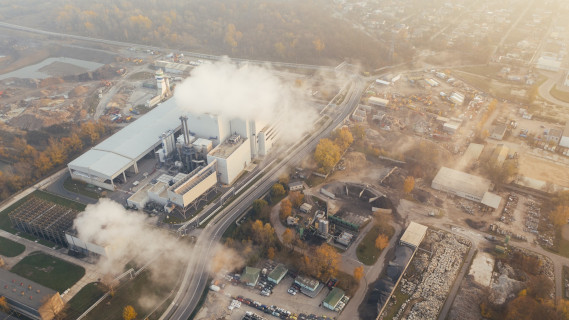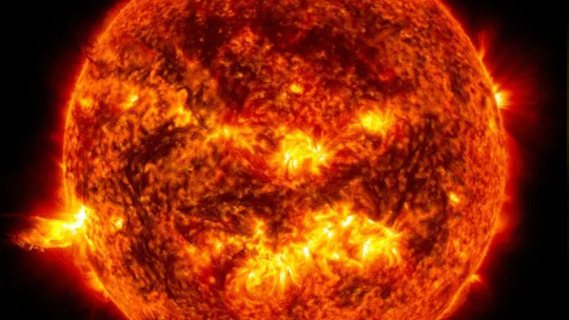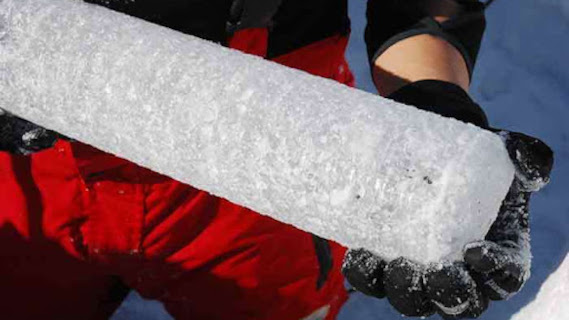Possible Causes of Climate Change

Global warming
Many factors influence climate change including natural events such as for example volcanic eruptions or the change in the orbit of the Earth around the Sun, and shifts in the earth’s crust, all these events have a role to play, however since the industrial revolution (in the 1800s), the global temperature has increased at a much faster rate by burning fossil fuels and because of human activities which are now the main causes of changing to our climate.

The thinning of the ozonosphere
Ozone depletion is not the main cause of climate change however the thinning of the ozonosphere which is caused by the release of chlorofluorocarbons (CFCs), which have been used for years as refrigerants for refrigerators and air conditioners and are able to act like greenhouse gases, is linked to climate change because ozone-depleting gases contribute to global warming. The ozone layer absorbs most of the sun’s ultraviolet radiation (UV-B) protecting plants, animals and humans from the sun’s harmful effects of its rays. In the last six decades the ozone layer has thinned, in Antartica even more than 50 percent. Given the serious threat posed by the depletion of the ozone layer in 1987 was adopted the Montreal Protocol to reduce the emission of CFCs, and thanks to its adoption since the 1990s has recorded a reduction in emissions of ozone-depleting gases.

Aerosols
Aerosols refer to tiny particles, few nanometers and less, (solid or liquid) which stay suspended in the atmosphere for days or weeks, and they arise from human activities (for example burning fossil fuels) or natural sources such as volcanic eruptions, or sea spray or even from the release of biological particles (e.g. spores) from vegetation. Aerosols influence the earth’s climate in two distinct ways: they can reflect incoming sunlight blocking part of the energy that would have reached the Earth’s surface, or they can trap solar energy within the atmosphere and counteract the cooling caused by reflection. However aerosols are generally considered having the same effect of greenhouse gasses. Aerosols are also vital for cloud formation: a subset of them may serve as cloud condensation nuclei and ice nuclei. An increased amount of aerosols may increase the cloud condensation nuclei number concentration and lead to more, but smaller, cloud droplets for fixed liquid water content.

Anthropogenic greenhouse effect
Scientific measurements have shown that since the beginning of industrialization not only has the global average air temperature increased, but also the concentration of carbon dioxide (CO2) and other greenhouse gases in the atmosphere. Numerous studies and in particular the scientific papers by the IPCC (Intergovernmental Panel on Climate Change which is the UN body for assessing the science related to climate change) have shown that the variation and thus the increase of these gases are due in particular to humans’ activities in particular to the combustion of fossil fuels. These man-made gases are called “anthropogenic greenhouse gases.” Just like natural greenhouse gases, they prevent the direct escape of heat radiation from the Earth into space. Due to the anthropogenic greenhouse effect, the Earth’s surface retains more solar radiation, and thus causes the increase in air temperature at ground level, a phenomenon which has been observed over the last 150 years.
The increase in temperature from the beginning of industrialization until today, is therefore defined as “anthropogenic climate change”.

Anthropogenic greenhouse gases
As we have noted in the previous pill (2.4) greenhouse gases emitted by human activities are called “anthropogenic greenhouse gases.” The extent to which carbon dioxide (CO2), methane (CH4) and nitrous oxide (N2O) emissions contribute to the anthropogenic greenhouse effect depends on their concentration in the earth’s atmosphere and on their greenhouse gas potential effect. Notably carbon dioxide is widely reported as the most important anthropogenic greenhouse gas because it currently accounts for the greatest portion (76%) of the warming associated with human activities.
Methane is responsible for 16%, nitrous oxide accounts for 6% and other gases for 2%. Although the percentage of greenhouse gases in the Earth’s atmosphere remains low compared to the percentages of oxygen (21%) and nitrogen (78%), their presence in the atmosphere has increased dramatically since the beginning of industrialization, thus impacting the greenhouse effect causing an increase of global warming. These gases have a long-term impact on the climate because they remain in the atmosphere for a long time before they are degraded and removed from the atmosphere through physical or chemical processes.
Noteworthy the effect of greenhouse gases depends on their Global Warming Potential, or “GWP”. This parameter indicates how intensely the gases, compared to the same amount of CO2, heat the climate over a certain period of time (100 years). For example, a GWP of 28 for methane (CH4) indicates that this gas, compared to the same amount of CO2, will heat the warm-up 28 times more over the next 100 years. Although the GWP of CO2 is significantly smaller than that of CH4 and N2O, the contribution of CO2 emissions to the total greenhouse effect is the largest (76% as mentioned above), as human activities produce much greater amounts of CO2 than CH4 or N4O.

Solar activity
The trend of solar activity (solar radiation strength) cannot be the cause of the abrupt increase in the global average temperature. It is assumed that solar activity is responsible for about 10% of the temperature increase from 1905 to 2005. Its contribution to global warming is therefore relatively low. Since the 1980s solar activity has even decreased, while the average air temperature at ground level has increased further. This evidence shows that the changes of solar activity are not responsible for the sharp rise in temperature and climate change, moreover it confirms that the increase in global warming is mainly due to the effect of greenhouse gases which have increased. since the beginning of the industrialization era (18th century).

What else witnesses humans' impact
The impact of humans on climate change is evident and it is possible to affirm this thanks to the measurements scientists were able to take using different methods and technologies: for example by drilling deep into the ice caps it is possible to extract cylinders of ice called “carrots” containing traces of gases and other tiny materials which are used to determine, and to reconstruct the climate of several hundred thousand years ago. Although several natural causes influence climate change, the correlation between temperature and the amount of greenhouse gases, such as carbon dioxide (CO2) and methane (CH4), present in the atmosphere is evident.
Studies have confirmed that temperature variations on the one hand, and changes in the concentration of greenhouse gases on the other, have gone hand in hand in parallel over the last 20,000 years, suggesting a mutual influence. From these observations it is also evident that current greenhouse gas concentrations are significantly higher than those of the past. Other evidence is obtained from satellites. These instruments orbiting around Earth have been used to measure the thermal radiation emitted from the Earth’s surface into space, and It has been observed that, since 1970, the amount of radiation that can be absorbed by greenhouse gases has been irradiated less and less in space. This is due to the increase in greenhouse gas concentrations, which increasingly prevents the direct escape of thermal radiation. It has been found that a greater amount of heat radiation is reflected back onto the earth’s surface. As a result, the troposphere (lower atmosphere) has warmed up and the stratosphere (upper atmosphere) has cooled down.
All these results indicate that the theory of anthropogenic climate change is valid (and demonstrated). Furthermore, simulations of climate models show that the recorded temperature increase cannot be solely attributed to natural causes, but only can be explained with the impact of human’s activities.







